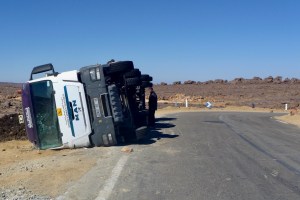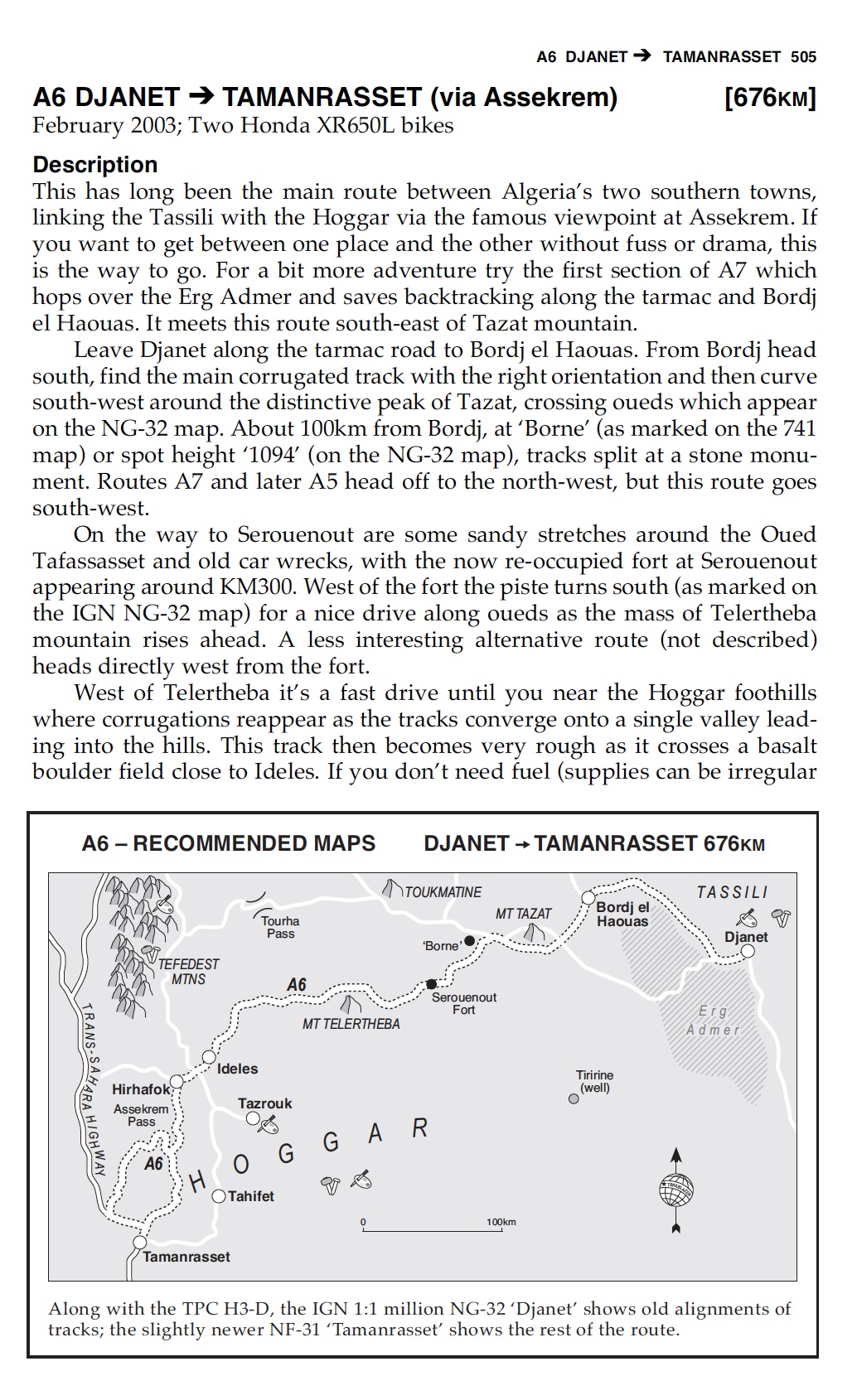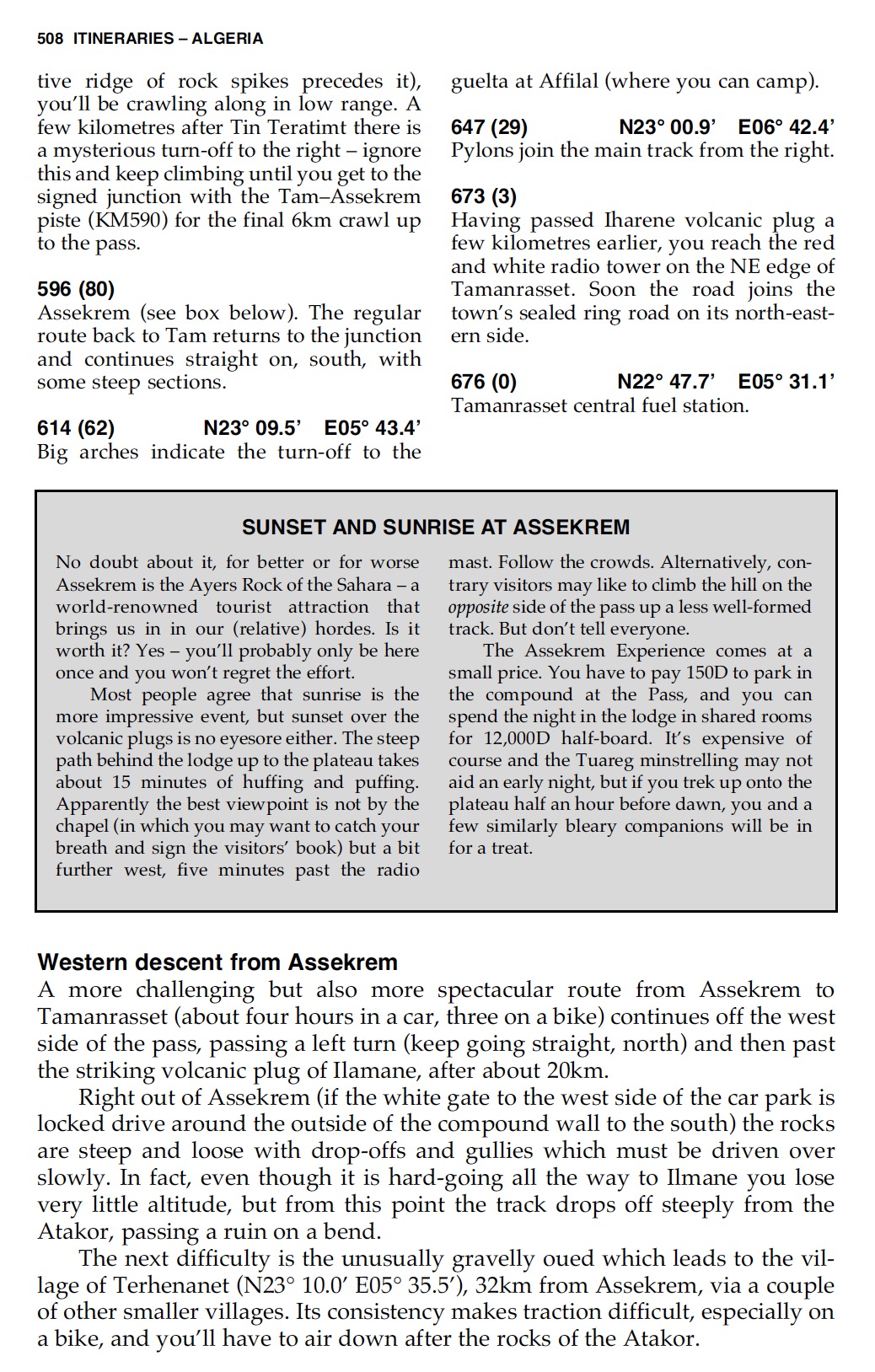Updated October 2023

In the good years the various tracks between Djanet, near the Libyan border, and Tamanrasset at the southwestern foot of the Hoggar mountains all combined to make classic multi-day adventures in southern Algeria.
You traversed Algeria’s fabulous southern expanse, from the sandstone ramparts of the Tassili N’Ajjer plateau, long famed for its prehistoric rock art, then went around (or over, left)) the dunes of the Erg Admer and out across oued-strung plains. Passing isolated mountains and other outliers, the volcanic rubble and basalt columns of the once molten Hoggar erupted from the sands and lifted you up to Assekrem, a few hours from Tamanrasset and a refuel.
The main route used by non-clandestine locals (A6 in my Sahara Overland guidebook, see bottom of the page) was still nearly 700 kilometres or two desert nights for most. It was also on the limit of what an unsupported bike could manage. When I first did it in 1987, the road from the north ended in Illizi, 400km from Djanet over the Fadnoun plateau. That all added up to over 1000km and one of the best all-dirt stages in southern Algeria, with just enough pre-GPS navigational challenges to keep you on your toes. It was rare to pass more than one or two other vehicles during the transit.
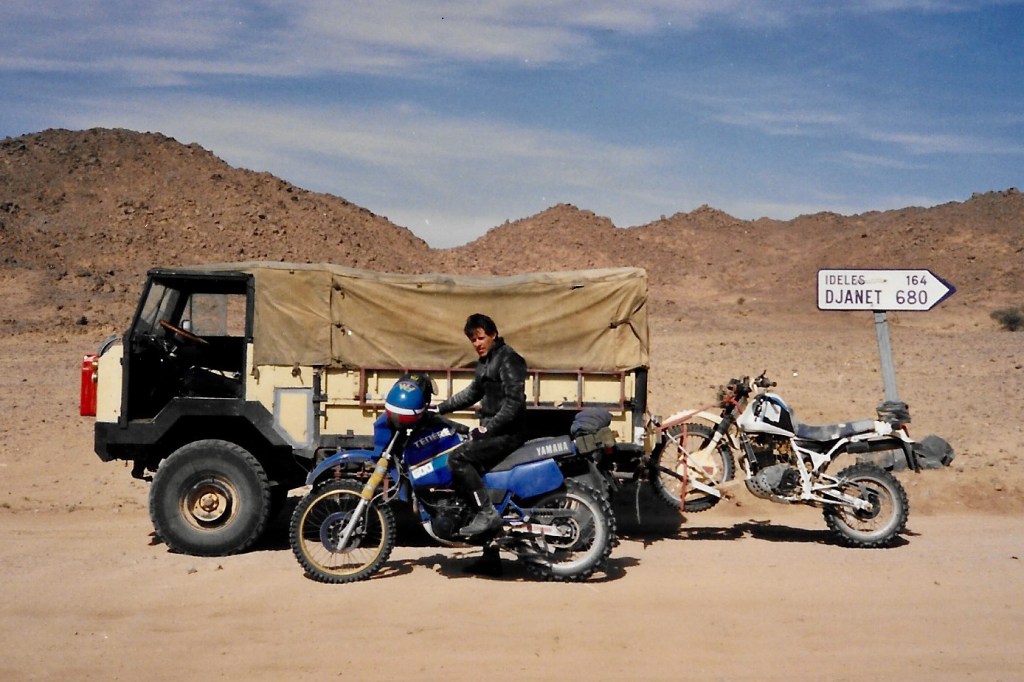
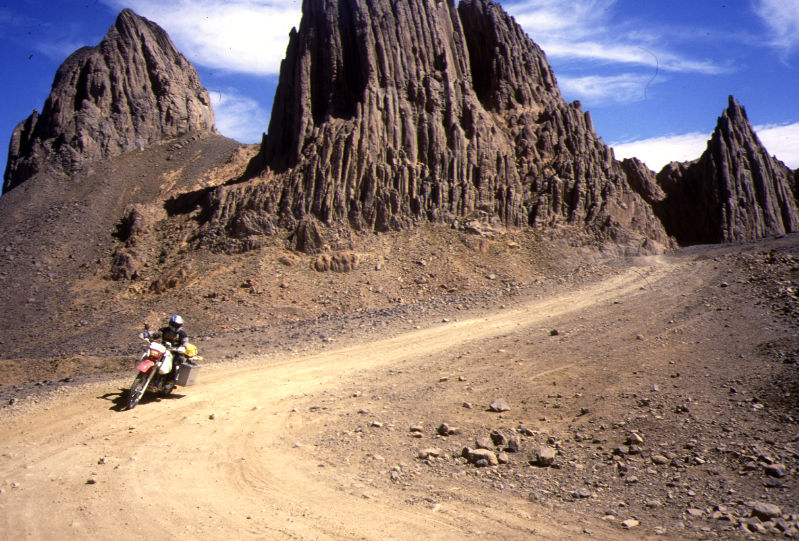
Over the decades the army were tasked with building a road over the Fadnoun’s switchback escarpments. Up to that point trucks supplying isolated Djanet had to take a huge, sandy detour to the west via Amguid, nearly doubling the road distance. Today the Fadnoun (below) sealed and still a great drive, but occasionally lorry drivers still fall foul of the Fadnoun’s curves, as left.

Morocco is famed for sealing southern desert pistes faster than we can keep up. Algeria isn’t like that. The huge distances and minimal population of the south, along with insurgent badlands over the borders in all directions, hold back development of transportation infrastructure – along with so much else in benighted DZ.
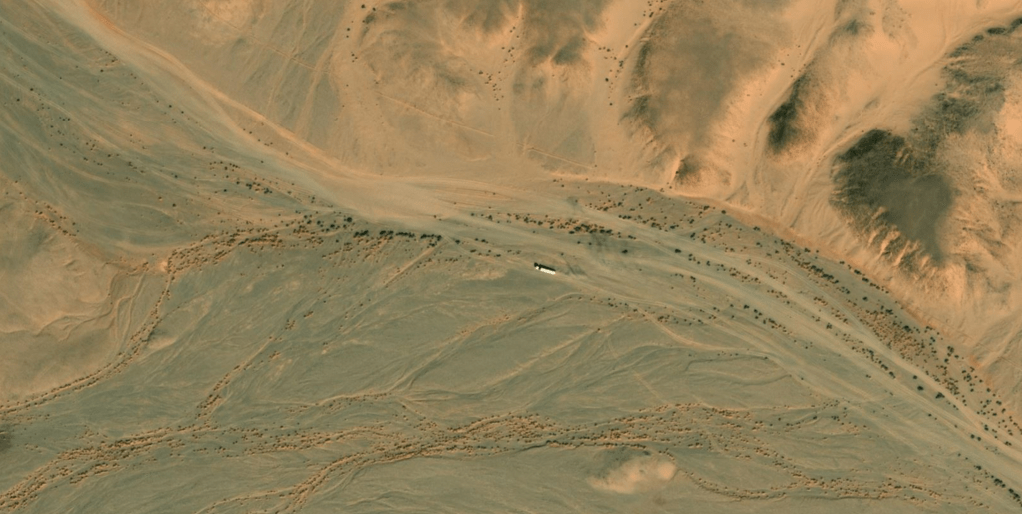
Route A6 has been supposedly closed to tourists for several years but recently satellite imagery as well as traveller’s reports show that the two famous southern Algeria towns are about to be joined with a slender ribbon of asphalt. The gap is now about 120km (1st hand info October 2023). How long it will take to ‘hammer down the golden spike‘, and whether the surface with survive the baking summers of the south remains to be seen, but that’s been an issue since they finished Trans Sahara Highway from Algiers to Tam in the early 1980s. It’s said the TSH remained intact over its 2000-km distance for just one year before flash floods, poor engineering and overloaded trucks beat the bitumen back into rubble and made driving back on the sands less damaging to truck tyres and suspension.

The northern arc of the ‘N55’ as indicated on Google Maps is incorrect. The source is unknown, there was never a route here and current asphalting to the east follows another alignment entirely. Southwest of the red cross (KM427) to Ideles, Google Maps is correct.
Yellow = waypoints from original A6 route description (see below).
In October 2023 a Brit rider, Ed Gill reported that the new road from Djanet ended a short distance west of the once abandoned Serenout fort (KM300 or KM147 from BeH), now re-occupied and surrounded by rubbish.
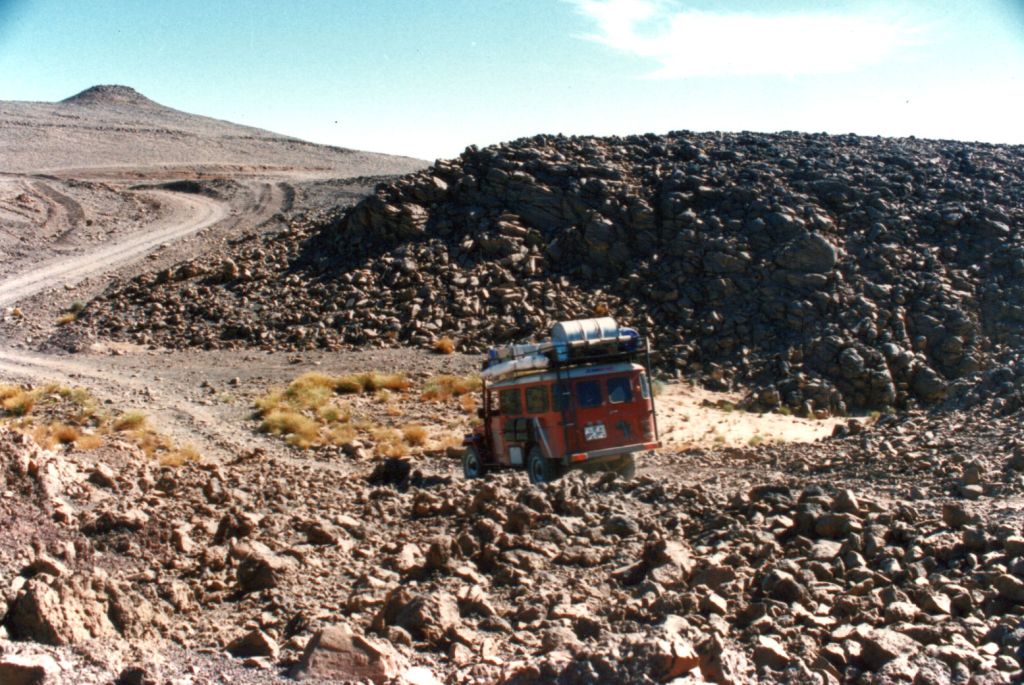

The tarmac resumes westbound, about 120km later at KM427 in my old A6 route description (or KM247 from BeH, according to Ed). Even if they do succeed in sealing this traverse, it will still remain one of the great routes in the Sahara, and of course there is no need to follow it. There is A7 to the north, A14 in the deep south and at least one more route via Tiririne, Tarabine and the Tassili Hoggar we did in 1989 and again in 2006 on the way back back from Mauritania on Sahara: The Empty Quarter.




